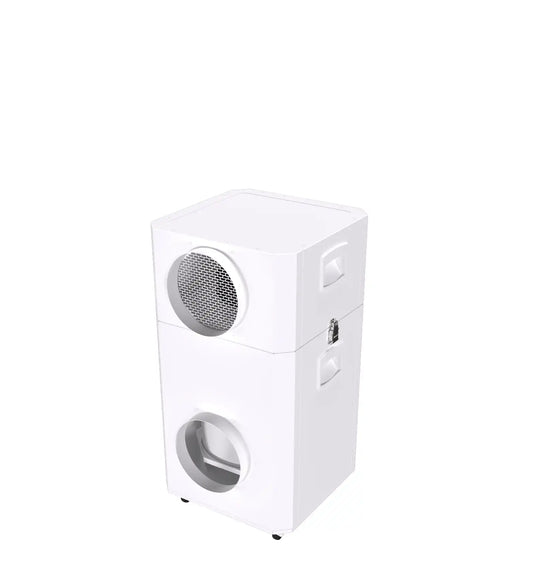The Effects of Mould Spores on Indoor Air Quality.

Mould is one of the leading causes of indoor air pollution in Australia, estimated to affect a third of existing homes. It is quick to spread during wet periods and takes root in damp, moisture-filled areas. Mould spreads by releasing particles into the air called spores. These harmful spores can trigger a range of symptoms upon exposure, including allergic reactions and asthma attacks in some people when inhaled.
Where can Mould be Found in the Home?
Any areas in the home that collect moisture make perfect breeding grounds for mould to multiply. This can include visible surfaces such as walls and floors as well as unseen areas like behind walls, in roof spaces, or under carpeting. Bathrooms and kitchens are particularly at risk of contamination because of poor ventilation as well as humidity created by showers and frequent water usage. Rainy, wet weather puts homes at a higher risk for mould development, especially if they are not well ventilated.

What Health Issues can be Caused by Mould?
Airborne mould spores can worsen symptoms of asthma and allergies and have been known to cause certain types of respiratory diseases. “The Department of Health advised that the World Health Organization (WHO) has ‘concluded that there is an association between exposure to dampness or mould and conditions such as asthma, allergic alveolitis and mould infections in susceptible individuals.” (aph.gov.au) Some individuals have extremely sensitive allergies to certain varieties of mould spores. Allergic reactions may consist of nasal congestion, coughing/wheezing, and eye and skin irritation. (aph.gov.au) Many asthma sufferers have asthma attacks that are triggered particularly by allergens, such as mould. As a result, those individuals often report increased asthma attacks in damp, mouldy environments. Living in contaminated spaces can in some cases even cause certain respiratory diseases such as aspergillus. Prolonged amounts of time inside of a damp environment with the presence of mould can reduce the functionality of your lungs and lead to more serious conditions.

How Air Purifiers Purify Mould from Indoor Air
HEPA Filters
Air purifiers with high efficiency HEPA filters are able to filter mould spores from indoor air. Mould spores range in size between 1 and 5 microns, and medical-grade H13 HEPA are certified to filter 99.95% efficiency @ 0.3 microns. All InovaAir air purifiers contain H13 HEPA filters, for further information, read our blog on "the facts about HEPA filters in air purifiers"
Activated Carbon Filters
When filtering mould, activated carbon filters are extremely important as they remove microbial volatile organic compounds (MVOC's). Basically, these are chemicals produced by the mould, this is what you are smelling when you smell a musty odour in your home.
InovaAir air purifiers use high-capacity activated carbon filters for filtering MVOC's from the air. When it comes to carbon filters the more the better, higher amounts of carbon result in more air contact time for the carbon to adsorb chemicals & odours.
If you're after an air purifier specially for mould we recommend looking at the following E8, E20 Plus and DE20 Plus models which all include high-capacity carbon filters with kilograms of activated carbon.
Click here to see INOVA systems designed to capture mould spores and mould VOC's
Article references
- “Aspergillosis.” Mayo Clinic, Mayo Foundation for Medical Education and Research, 5 Feb. 2020.
- Canberra. “2. Possible Health and Social Impacts of Exposure to Mould.” Home – Parliament of Australia, 17 Oct. 2018.
- “Mold: A Trigger for Asthma and Allergy: Carolina Asthma & Allergy Center.” Carolina Asthma & Allergy, 5 Oct. 2020.














